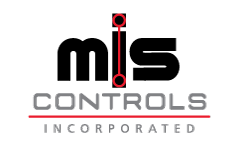
Common Challenges in Custom Control Panels
Custom control panels are at the center of modern industrial machinery, enabling precise control and monitoring of complex processes. While the benefits of custom control panels are numerous, their design and implementation come with a unique set of challenges. Addressing these challenges effectively ensures that the control panels function optimally and contribute to the overall efficiency and safety of industrial operations. Here, we explore some custom control panel challenges and how to overcome them.
Challenge 1: Design Complexity
The Problem: Custom control panels often require intricate designs to meet specific operational requirements. This complexity can lead to design errors, inefficient layouts, and difficulties in troubleshooting and maintenance.
Solution: To manage design complexity, it is essential to adopt a modular approach. Breaking down the control panel into smaller, manageable modules allows for easier design, assembly, and maintenance. Utilizing advanced design software can also help in visualizing and optimizing the layout before actual production. Engaging in thorough design reviews and simulations can identify potential issues early in the development process.
Challenge 2: Component Compatibility
The Problem: Ensuring that all components within a custom control panel are compatible can be challenging. Incompatible components can lead to malfunctions, increased wear and tear, and potential system failures.
Solution: Conducting a detailed component compatibility analysis is crucial. This involves selecting components from reputable manufacturers and ensuring they meet the required specifications. Regularly updating component libraries and maintaining strong relationships with suppliers can also aid in sourcing compatible and high-quality parts. Implementing standardized testing procedures for all components before integration helps in verifying compatibility.
Challenge 3: Thermal Management
The Problem: Custom control panels often house numerous components that generate heat. Without adequate thermal management, overheating can lead to component failure, reduced efficiency, and safety hazards.
Solution: Effective thermal management strategies include designing for optimal airflow, incorporating heat sinks, and using cooling fans or liquid cooling systems. Positioning heat-sensitive components away from high heat-generating areas can also help. Thermal analysis during the design phase can predict heat distribution and identify potential hotspots. Ensuring that the enclosure is adequately ventilated and using temperature sensors for real-time monitoring can prevent overheating issues.
Challenge 4: Space Constraints
The Problem: Balancing the need for a compact control panel with the requirement to fit all necessary components can be challenging. Space constraints can lead to cramped layouts, making maintenance and troubleshooting difficult.
Solution: Prioritizing space-efficient components and utilizing multi-functional devices can help in optimizing space. Layered or stacked designs can increase the effective use of available space. Using 3D modeling software during the design phase allows for better visualization and planning of component placement. Additionally, ensuring easy access to critical components through strategic layout planning can facilitate maintenance and troubleshooting.
Challenge 5: Regulatory Compliance
The Problem: Custom control panels must adhere to various industry standards and regulatory requirements. Navigating these regulations can be time-consuming and complex.
Solution: Staying informed about relevant industry standards and regulations is critical. Engaging with regulatory bodies and participating in industry groups can provide valuable insights and updates. Employing compliance specialists or consultants who are well-versed in regulatory requirements can ensure that the control panels meet all necessary standards. Documenting all design and manufacturing processes meticulously can aid in demonstrating compliance during audits.
Challenge 6: Electrical Noise and Interference
The Problem: Electrical noise and interference can disrupt the functioning of custom control panels, leading to inaccurate readings, signal loss, and operational inefficiencies.
Solution: Implementing proper shielding and grounding techniques can mitigate electrical noise and interference. Using twisted pair cables and maintaining proper separation between power and signal cables can reduce the impact of noise. Incorporating filters and surge protectors can further enhance the system’s resilience to electrical disturbances. Regularly testing for noise and interference during the design and post-assembly phases can ensure the control panel’s reliability.
Conclusion
Custom control panels play a vital role in the efficient operation of industrial machinery. Overcoming the challenges associated with their design and implementation requires a combination of strategic planning, advanced technology, and adherence to best practices. By addressing design complexity, ensuring component compatibility, managing thermal loads, optimizing space, complying with regulations, and mitigating electrical noise, manufacturers can create robust and reliable custom control panels that meet the specific needs of their clients. Through continuous improvement and innovation, the industry can keep pace with the evolving demands of modern industrial applications. Contact MIS Controls today to learn about we can help you with your custom control panel needs.
